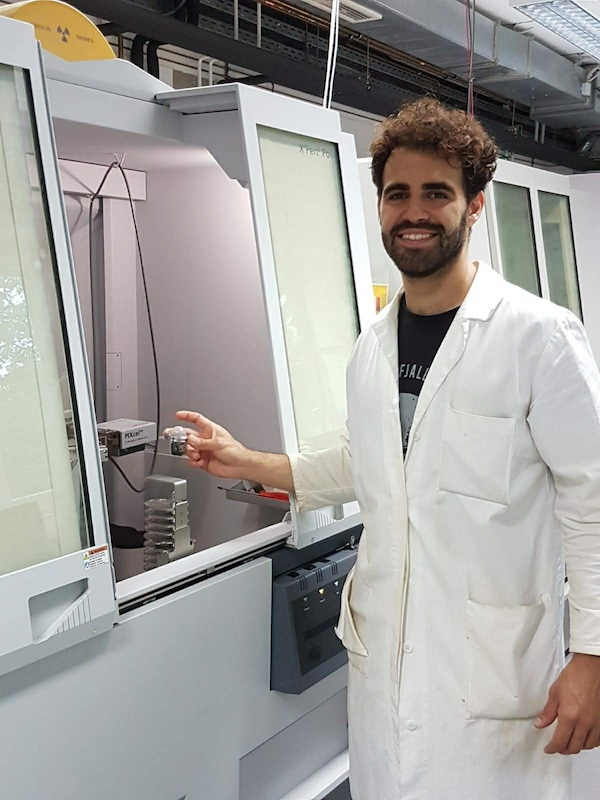25. Aug 2021
Scientists develop alternative cement with low carbon footprint
Here you find the doctoral student’s profile of Leonardo Negrão. He published results of his doctoral studies at Martin Luther University Halle-Wittenberg and shared the research more widely with a press release.
About the author:

- Leonardo Negrão ORCHID ID, ResearchGate
- Research area(s): Mineralogy, Industrial Minerals, Mineral deposits, Geology
- Institute of Geosciences and Geography (link), MLU
Field(s) of expertise during doctoral studies:
- Applied mineralogy of cement
- Characterization of geological materials
Curriculum Vitae
- Research assistant / scholarship holder
- Doctoral studies in the group Mineralogy/Geochemistry of Prof. Dr. Herbert Pöllmann at MLU
- Teaching assistant at German University of Technology in Oman, 2018
- Master in Geochemistry at Federal University of Pará in 2015
Challenges, rewards and contribution
Q: What was your most important contribution to the publication?
A: The most important contribution was showing that a new type of cement could be produced using mining residues, and in a more sustainable way reducing CO2 emission and energy consumption significantly. Moreover, our work shows an environmental-friendly alternative for two important and essential industrial activities: mining and cement production.
Q: What was challenging and what was a rewarding moment during your work presented in the publication?
A: Diverse technical challenges appeared when producing and testing the new cement, but they were solved thanks to the teamwork and intensive discussion in our research group.
Significance of publication
Researchers at the Martin Luther University Halle-Wittenberg and the Brazilian University of Pará have developed a climate-friendly alternative to conventional cement. Carbon dioxide (CO2) emissions can be reduced during production by at least one-third when a previously unused overburden from bauxite mining is used as a raw material. The alternative was found to be just as stable as the traditional Portland cement.
from press release no. 114/2021 of August 18, 2021.
Related publication
L.B.A. Negrão, H. Pöllmann, M.L. da Costa,
Production of low-CO2 cements using abundant bauxite overburden “Belterra Clay”
Sustainable Materials and Technologies 29, e00299 (2021)
doi: 10.1016/j.susmat.2021.e00299
About this profile
Doctoral students contribute significantly to publications highlighted by the MLU press office in many cases. These early stage researchers and their work in connection with the publication are in the focus of these profiles. Please check further doctoral student’s profiles.
Are you interested in science communication and have an interesting story to tell? Get in touch with MLU’s press office at